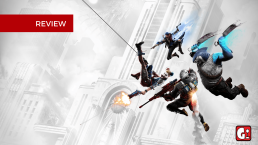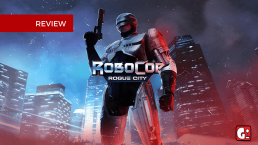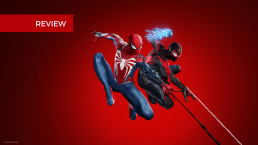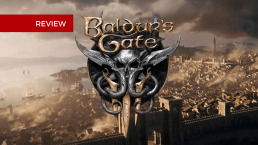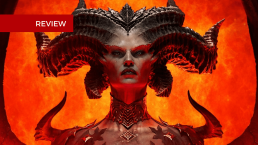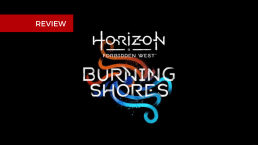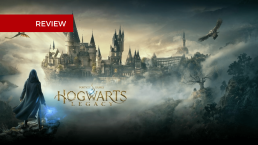Review | Suicide Squad Kill the Justice League
As a big fan of the Batman Arkham games, I was heartbroken after playing Suicide Squad: Kill the Justice Leagues alpha test. The shooter component and associated live service model took some time to get used to. In Suicide Squad: Kill the Justice League, heroes are villains and villains are heroes.
Developer Rocksteady set a new standard for licensed games in general and superhero games in particular two console generations ago with Batman: Arkham Asylum. Although Suicide Squad: Kill the Justice League is narratively a continuation of the same Arkhamverse, the British studio takes a radically different approach in terms of content.
The game’s story sets exactly the right tone: light-hearted, funny, a bit crazy, but above all believable. At its strongest moments, it’s reminiscent of James Gunn’s Guardians of the Galaxy films. Brainiac has attacked Metropolis, Superman’s city, and brainwashed some members of the Justice League. Commander Amanda Waller retrieves Deadshot, Harley Quinn, King Shark and Captain Boomerang from Arkham Prison to stop Brainiac. And you guessed it, for that you have to go straight through the Justice League.
Of course, the four psychopaths also have to deal with each other, their erratic leader Waller and her right-hand man Rick Flag. Yes, Kill the Justice League is once again packed with iconic and obscure DC characters, and they are all convincingly portrayed by the voice actors. From Batman (played by the late Kevin Conroy, of course) and Wonder Woman to Riddler and Gizmo, as well as Task Force X itself; the acting is convincing, the chemistry between characters is there and that often creates hilarious scenes.
In between you mainly carry out the same types of missions. For example, there is a mission in which you have to escort a number of people to Toyman’s bus. Sometimes these are Rick Flag’s soldiers, other times Penguin’s henchmen, but the mission itself is exactly the same, except for that cosmetic detail and the location on the map, every time, right down to the animations.
Moreover, it hardly matters whether you have to evacuate people, escort a van, or destroy turrets. Bottom line, Suicide Squad mainly consists of jumping around with everyone’s unique traversal abilities (Deashot uses a jetpack, Boomerang a Speed Force Gauntlet, Harley Quinn takes up Batman’s grappling hook and King Shark can just jump really far.) and shooting at everything that moves.
Let’s be honest: shooting, jumping, flying, pounding, running and swinging goes very smoothly. The four anti-heroes all have slightly different skills, but the controls allow them to operate all four with almost the same speed. As soon as the controls click a bit, the game makes you feel strong and powerful, just like the games with Batman and Spider-Man do. Not an unimportant detail in a superhero (or rather villain?) game.

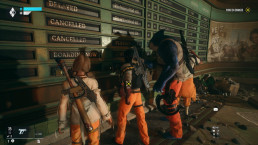

To make Suicide Squad playable for longer – beyond the end of the story – collect new weapons and gear every time. You can then also upgrade and modify that gear. The problem is that none of it really matters.
Your weapons have more stats than necessary, because the only number that matters is how much damage you do per second. Especially in the midst of the chaotic shootings, every gun feels and sounds the same. Side characters whose sole function is to modify those weapons and gear are therefore just as forgettable as Milton.
It’s a shame that your loot still plays such a major role in the game. The cutscenes, for example, are beautiful, well written and also feature excellent voice work. Often a shame is the score screen after a battle, which completely takes you out of the story.
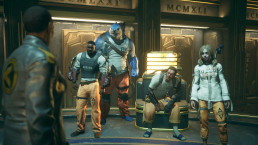
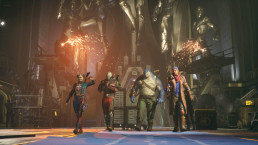
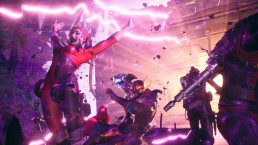
Despite its flaws, Rocksteady still shows at certain moments that it is still a talented studio. The city is beautifully and richly designed, with all kinds of unreal art deco constructions and countless references to the DC universe and all its inhabitants, it is definitely worthwhile to go on a sightseeing tour of the city.
Suicide Squad is also technically well put together. The game looks colorful, sharp and lightning fast. During battles, the frame rate remains quite stable at 60fps, even during the bizarrely chaotic final battle, a feat in itself.
Still, it’s clear that Suicide Squad and Rocksteady are not a happy marriage. The studio’s talent is clearly visible when it comes to the technology, the acrobatic fighting and the voice acting, but the boring missions and meaningless loot make Suicide Squad a mess. After about ten hours, Task Force X’s mission is over. However, Suicide Squad still has all kinds of endgame content to offer and new seasons will be released soon, which will also add other anti-heroes to the game.
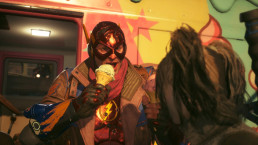
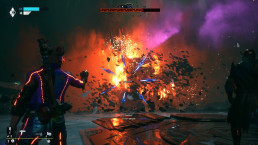

Suicide Squad: Kill the Justice League is available now for PlayStation 5, Xbox Series X and S, and PC. For this review, the game was played on an Xbox Series X.
Score:
0,0
+ High-quality voice acting
+ Fighting feels powerful
+ Stable frame rates under impressive conditions
– Repetitive missions
– Scoring and loot screens are often annoying interruptions
Review | RoboCop Rogue City
I am a child born in the eighties. The time when titles such as Star Wars, Indiana Jones and Robocop (made by none other than our own Paul Verhoeven) saw the light of day. So a game with these names always deserves my attention. Will this Robocop take me back to my teenage years?
Robocop: Rogue City centers on Alex Murphy, a cop who barely survives an attack by drug criminals, and has had to pay for it with basically everything. His entire body has been replaced by a robotic prosthesis and all that remains is his face. The robotic Alex Murphy now patrols the streets of Detroit, a city that appears to be run by a Corporation (OCP), the makers of Robocop. The underlying plan is bigger, replacing old Detroit with Delta City, driving poor residents out of the city.
The story in the game is new. It has no familiar parts from the films. A new enemy has appeared and you investigate what is going on. You scan crime scenes to look for clues and tackle groups of criminals. We see many familiar faces from the film in the game, such as his partner Anne Lewis, and everything breathes the atmosphere of the film. One-liners and Robo’s cheesy and awkward humor.
It is a story that will certainly not win any Oscars, but it is the perfect motivation to go all out as a mechanical officer. And the game does that while remaining surprisingly faithful to the source material. A lot of well-known characters are also present, the iconic sound effects from the original films thunder from your speakers and the icing on the cake is perhaps Peter Weller who is present to once again provide the voice of RoboCop.
The game does not shy away from secretly hinting at some social criticism, just like the original liked to do. But the human side of the cyborg also gets enough screen time. For example, RoboCop experiences various flashbacks to the time before the attempt on his life and he talks several times with a psychologist who gives his human side space to shine. It is clear that the developers have a clear passion for the license and that authenticity shines through on all sides.
The key question then remains: does such an authentic basis also translate into entertaining gameplay? That answer is a bit more twofold. Rogue City does a number of things very well, but there are also a few clear caveats that detract from the gaming experience. The core of that gameplay, shooting down hordes of criminals, is by far one of the highlights of the game. Armed with your trusty Auto 9, you will blast kilos of lead through all opponents. RoboCop doesn’t do subtle, so taking cover is rare.

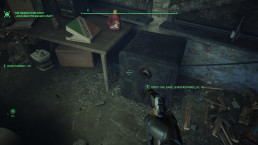
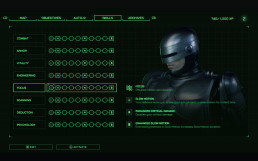
Often you run straight into the crowd and shoot everyone without hesitation. The punch that your weapons deliver and the sound that the Auto 9 makes with every volley fired will never bore you for a moment. You can fine-tune your playing style as the game progresses with skill points that you can spend to, for example, do more damage or improve your armor.
But the Auto 9 itself can also be customized with various circuit boards and upgrades, which can be quite drastic. For example, one circuit board ensures that you never have to reload, at the expense of the accuracy of your shots. Another circuit board does exactly the opposite and turns your gun into a real sniper, with single shots that do much more damage each.
It gives the shooting that extra depth that benefits the gameplay, especially if you have been hopping around the digital streets of Detroit for ten hours. It is the depth and variety that is sometimes a bit lacking further in the game. In addition to all the lead shooting, as RoboCop you also go to the streets a lot to do old-fashioned detective work.
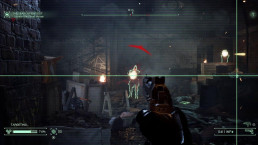
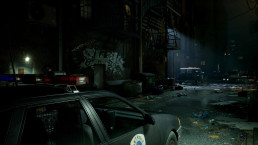
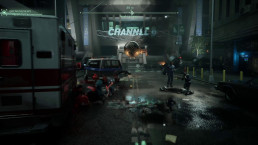
The game’s semi-open world structure gives you the opportunity to explore Detroit at your leisure amid the violence and interact with the countless side missions the game offers. The problem here is that the city itself feels quite barren and deserted at times. Apart from a handful of NPCs, you will find little excitement in the world of Rogue City, which is a shame. How fitting would it be to have to solve a street fight or shoplifting as Robo.
The missions you are presented with are often very simple in design. Walk from point A to point B, talk to person It is not very special and sometimes even a bit boring. Moreover, the conversations you have with the residents of Detroit often feel superficial and have little impact. You are given the opportunity to choose dialogue options more than once, but the consequences of those choices are hardly noticeable in the further course of the game.
Only at the end are you presented with the consequences (the game has multiple endings), but there too the differences are very small. As a result, RoboCop Rogue City sometimes feels a bit too superficial and that is a shame, because the first impression is so strong. It is also a little later in the game that the technical finishing is lacking in many areas. Voices are not always synchronized, the animation of characters is sometimes very wooden and cutscenes stutter and have clear blocky artifacts. Although you would think that this might have been done on purpose, it is the 80’s baby after all!
RoboCop Rogue City is out for PlayStation 5, Xbox Series S and X and PC.
Score:
7,5
+ Authentic 80’s feel
+ Beautiful graphics
+ Shoots away nicely
+ Nice and violent, like the movies
– Skills, “builds” and consequences not clearly explained
– Game has some performance issues wile on Graphic mode
Review | Marvel's Spider-Man 2
The mission for Spider-Man 2 was clear: just more Spider-Man, but better and bigger. After all, the first game and semi-sequel Miles Morales set such a solid foundation that we wanted to see more of it. However, Insomniac adheres to that assignment very literally. Spider-Man 2 is therefore a very good game, but not a surprising one.
This is, above all, noticeable in the story, which very neatly follows the lines of the comic book series. Thanks to Sony’s marketing machine, we’ve known for years that Venom is the big villain of this game, and let’s be honest: he’s a wonderfully evil, gruesome, nasty and terrifying character. It’s a joy to take on the Symbiote. Venom is just always cool!
But if you already know something about Venom and Spider-Man, for example because you have read a comic or seen a movie, then you can predict the story in broad strokes. Peter comes into contact with the Symbiote and that initially gives him extra powers, but it soon makes him a bit grumpy and unkind. It won’t surprise you that the Venom suit doesn’t just bring Peter benefits.
Sure, it might be other characters who come into contact with him, in other locations, with slightly different motives. It’s not a bad story at all: it’s wonderfully comic book-esque, with great acting and epic moments. It’s just not very surprising.
What is really bad is the other villain from the game, Kraven the Hunter. The name says it all: he is a hunter looking for the toughest prey to face off against. Kraven therefore decides to break a number of supervillains out of the maximum security prison, release them and then start hunting them down. It’s not a particularly deep or interesting motivation, and Kraven is a boring guy who’s just focused on his hunt. It’s mainly a lame excuse to fill the city with groups of his followers to fight, and to stall for time until Venom appears on the scene.
The story comes into its own during the personal moments. The best Spider-Man stories always revolve around the friction between the hero and the man behind the mask, and that’s the case here too. Both Peter Parker and Miles Morales struggle to find a balance between their private lives and their roles as superheroes. Peter is a bit older and is looking for a way to build a career between his Spider-Maning. Miles is about to go to college and has to write an essay about himself, but he struggles to put into words who he is without addressing his role as Spider-Man.
The relationship between Peter, his girlfriend MJ and his returned childhood friend Harry is especially a pleasure to experience. There are wonderful moments when these three just spend time together and chat, but also emotional situations where they broach difficult topics. They grow as characters, and that is much more clever and surprising than what Insomniac did with the superhero part.
Of course, Miles Morales also plays a major role in that story, but it ultimately feels like a major supporting role and that’s a bit of a shame for such a cool character like Miles. He certainly has his own difficulties to overcome and certainly grows as a person, but that is mainly in service of Peter’s story. The problems Miles is struggling with just feel a lot smaller and less important than what Peter has on his mind.
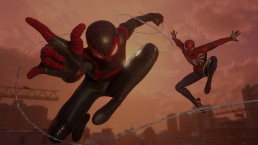

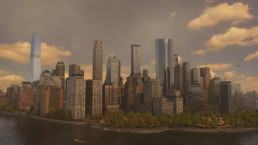
Fortunately, you can always spend more time with him if you want: in the open game world you can switch between Peter and Miles at (almost) any time, and choose which hero you swing through New York as. Switching between the playable heroes works very well and smoothly. The only question is: why would you do it, other than a personal preference for one of the two?
Many things in the open world can be completed as one of the two, but in the story missions and a fair amount of the optional content you necessarily have to play as Miles or Peter. You can’t suddenly choose to make Miles the main character of the story. Plus, the two feel pretty much the same in combat, except for some special moves. It’s not like one is a tank and the other is better from a distance, for example. They are fairly interchangeable, but it is still nice that it is possible.
Insomniac hasn’t changed too much in the combat system anyway, and there’s nothing wrong with that. You can still string together fluid combos with the greatest of ease, with Spider-Man ramming enemies into the air, beating them up while flying and then pulling the next victim up with his web. The wonderful ballet of dodging, swatting and web shooting works just as well as in the previous parts and will never get boring in the fifteen to twenty hours of playing time.
Of course, small things have been added, such as a parry. Enemies sometimes come up with extra strong attacks that you cannot avoid. You will then see a yellow circle that quickly turns red to indicate that you need to parry it. It’s not a particularly brilliant addition, but it does provide just a little more variation while fighting.
Both spider men also have their own special moves, with which you can every so often transform the screen into a spectacular rain of effects. Miles relies on his lightning abilities (with the very confusing name ‘Venom Skills’), while Peter starts with his metal spider arms and later can hit hard with the powers of the Symbiote. The last set of skills in particular give the combat an extra dose of spice, because those skills are nice and cruel and throw your enemies in all directions.
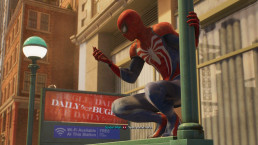

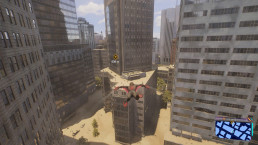
Another novelty is the ‘web line’, with which you stretch a line between two walls. This way you can sneak in and eliminate everyone from above. It feels extremely satisfying to finish off an entire camp full of Hunters as quietly as possible. This new gadget makes it easy to get above all the enemies, maybe even a little too easy. Since the web line can be infinitely long, you can actually walk above all the enemies and take them off one by one. The levels don’t seem to be designed to take this new toy into account, but that doesn’t really matter when it’s so satisfying.
Swinging through the open world of New York has also been largely left intact, and we are happy with that too: there are few gameplay mechanics that feel as perfect as the web swinging from Spider-Man. The sequel takes it even further with the ‘web wings’, a kind of wingsuit with which you float through the air. This is useful if you don’t have anything to attach your webs to, for example above a park or if you jump from the highest skyscraper.
The wings make you a lot faster and that’s a good thing: Spider-Man 2’s map is about twice as big thanks to the addition of Brooklyn and Queens. As a non-American, those names don’t mean much to me, but the more spacious neighborhoods with lots of trees, Miles’ school and certainly the Coney Island amusement park offer the game a little more variety. Although we should not exaggerate that: it remains just an urban area that you whiz through.
The fast travel of this game deserves a separate paragraph, because it is truly magical. You can open the map at any time and point to a spot, and almost immediately Spider-Man swings through the city at that exact spot. There are no fixed fast travel points where you necessarily have to start, you can click anywhere you want. Unfortunately, we have to make a major caveat: you have to unlock fast travel per district by completing a reasonable amount of optional content. As a result, it is only useful later in the game, for example to complete the last collectables.
That in itself wouldn’t have been so bad, if the optional content was actually interesting to do. However, there is a lack of creativity there: the answer to the question ‘what will we let the player do here?’ is almost always ‘fighting a group of meaningless enemies’. The main missions also suffer from this occasionally, but the fights are still interspersed with impressive cutscenes. So it’s a good thing that the combat system is rock solid, because you spend a lot of hours whacking away.
In terms of boss fights, the game pulls out all the stops, with surprising selections from the comics’ villain collection. They feel big and immersive, not only in terms of gameplay, but also in the story. The only downside is that these battles can be a bit dragging, as they sometimes last up to ten minutes without the boss performing a new attack pattern. Once you understand his moves, it’s all about fighting until you finally win.
It’s a bit of a stretch to say that this sequel is just more Spider-Man. Such arguments are often used to condemn a game, while not every game needs to reinvent the wheel. In this case, ‘just’ more Spider-Man results in a wonderfully playable, beautiful and compelling superhero story.
It is just a shame that Insomniac stays so much within the lines in the overarching story and makes few creative choices in the optional content. With a little more spice it would have been an unforgettable game. Now it’s just a very good game that will sell many millions again and will satisfy most customers. We can hardly be dissatisfied with that.
Score:
0,0
+ Fast travel and switching between Spider-men is truly magical
+ Wonderfull, spectacular & fluid combat
+ Swinging and floating works perfectly
+ Personal moments of Peter and Miles
Surprising boss battles
– Miles and Peter feel interchangeable.
– Predictable story.
– Little creativity in side missions.
Review | Assassin's Creed Mirage
Since the first Assassin's Creed, we have been more than sixteen years and almost as many main parts in the series. Nevertheless, we have never seen a game like the first part again. The sequels kept getting bigger and bigger, and became less and less about playing an assassin. Assassin's Creed Mirage goes back to the basics of the series.
Assassin’s Creed Mirage is set in Baghdad at the end of the ninth century. This time the leading role is for an old acquaintance: Basim. When we meet him in Assassin’s Creed Valhalla, he is already a seasoned assassin with a double agenda. In Mirage he is still a young street rat, who spends his days doing some menial work until something happens that suddenly makes him join the mysterious Hidden Ones.
Yet Ubisoft manages to make the most confusing intro ever in the series. In the first few hours, names and locations are thrown around, and the game jumps from one topic to another.
When the game really starts, Assassin’s Creed Mirage is a piece of cake. The game is built on the same foundation as Valhalla, Odyssey and Origins, but without a lot of baggage. So the same controls and menus, but not a hundred thousand different weapons, skills and question marks on an intimidatingly large map.
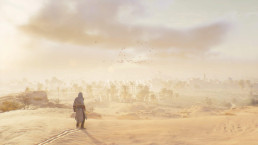
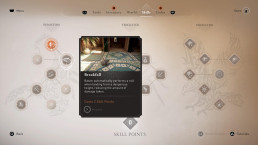
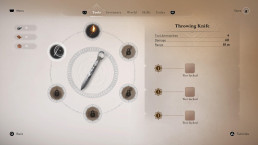
Without axes, beards and boat trips, Assassin’s Creed is once again about playing assassin. The extermination of members of The Order was of course still in the more recent parts, but had actually become more of a side issue. Here that system is magnified. You must first track down and unmask each target before you can strike.
That detective work has more meat on the bones in Mirage than in the previous games, although you still don’t have to be called Sherlock Holmes to solve a case. Actually killing your target is a new challenge. There are always a few different approaches to explore, but ultimately they all have the same ending, the end of your target.


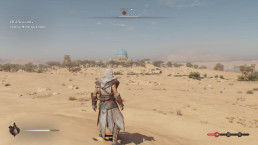
Assassin’s Creed Mirage therefore keeps the momentum going, but many murders also feel rather interchangeable due to the relatively high pace. You rush from target to target, without ever really thinking about anything. A longer adventure in a large bazaar stands out in a positive way and brings out the best of Mirage. The mission carefully builds up to taking out your target, and is also set in one of the most authentic locations in the game.
The colorful spices and carpets in the stalls pop from the otherwise sandy brown screen, while chromatic aberration gives the whole a warm, almost dreamy appearance. All this makes Baghdad very attractive.
Other missions felt more routine in comparison, like stabbing a random soldier on the streets of Baghdad. The game could have slowed down the tactical throttle a bit more often, in order to really highlight the atmospheric locations and the actual assassinations.
Unfortunately, it doesn’t help that the targets in question are incredibly interchangeable. From the start of the game, people point very loudly in their direction and shout ’these are the bad guys, they have to die!’, and no one makes a critical comment. As a player you have to get that motivation from previous games. The existence of the Isu/Those Who Came Before is reduced to a trivial fact that no one really notices, and nothing is done with Basim’s double agenda from Valhalla.
It is an art to make a good prequel, as the ending point has already been determined. Mirage unfortunately misses the mark in that area and above all adds nothing to the existing canon of Assassin’s Creed. Mirage does add something to your general development: the brief history lessons about certain buildings, the city and local cultures are finally an integral part of the game again.
Assassin’s Creed Mirage is now available for PlayStation 4, PlayStation 5, Xbox One, Xbox Series X/S and PC. The game will also come to iPhone 15 Pro in 2024.
Score:
7,5
+ Tracking down targets provides excellent structure.
+ It’s finally all about assassinations again.
+ Baghdad is very atmospheric.
– Occasional Frame drops in busy areas.
– Negligible story.
Review | Baldur's Gate 3
Baldur’s Gate 3 is perhaps one of the best games to come out this year, perhaps the best RPG of the past decade. It’s a game that takes the whole genre to a new level and offers the freedom we fantasized about twenty years ago.
RPGs have been offering us freedom of choice for years. A great idea that in practice often comes down to choosing from a few flavors. average hero can be noble or as a cowboy shoot down every crook, but in the end he or she always achieves the same goal: the mission is completed. The game world you walk around in remains roughly the same and your primary path remains unchanged.
That’s certainly not the case in Baldur’s Gate 3. After your character escapes from a strange spaceship of dimension-traveling, mind-reading monsters, you set out to remove a parasite they introduced from your brain. You soon find out several ways to do that. You can search for a missing druid who may be able to heal you and save his camp, or team up with a group of goblins to drive the druids out of the forest. Or you forge an alliance with a captive dragon rider who knows another healer and skip about ten hours from the main story.
Throughout the game all kinds of small branches in the story are possible. Sometimes they are linked to your character. Are you playing a drow? Then the goblins will think you are one of their leaders, you are naturally so, and you can easily infiltrate their camps.
At other times, deviations are hidden behind dice rolls. Trying to convince a boss to surrender? You roll a 20-sided die, add your conviction score on top of it and cross your fingers that it is higher than you need to ‘win’ the conversation. If it works, you often don’t have to fight. Is your passive perception high and do you spot a secret door? Then you can sneak into the last room of a dungeon to steal unseen treasures.
The game is very explicit in how high you roll. If you actively roll a dice yourself, it will be large in the middle of your screen. If you walk around and miss something that your character could have passively noticed, a message will appear above their head. That emphasis on statistics makes the game look a bit mechanical, but you also notice continuously where the choices are hidden. As you play with your first character, you’ll mentally make notes of what else you could have tried to experiment with later in a second campaign, or third, fourth…

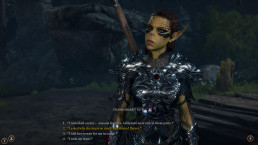
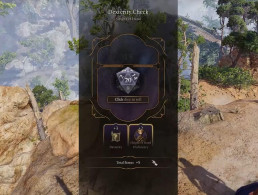
The game does a lot to offer variation outside those moments that have been made. For example, a paladin can break his oath and transform into an ‘Oathbreaker’, with a slew of new abilities and side missions. Or you can choose to give them the ‘Dark Urge’ when creating a character, which basically makes them a psycho with additional dialogue options. You can learn to talk to animals to discover new paths by talking to the local house cat, or cast a spell to resurrect the dead to interrogate them.
At the same time there is the Inspiration system, which rewards you with special points when you do something that fits a character. Do you play a rogue and rob someone? Chances are you’ll get a point for that. With that point you can retry a failed dice roll. It motivates you to stay in your role. Baldur’s Gate 3 is full of such nuances that make each play session unique. And where they remain on the surface in many other RPGs, our campaign went in completely different directions than that of friends.
Everything in the world of Baldur’s Gate 3 was put somewhere for a reason. It never feels like walking through dungeons from one redeemable battle to the next – you’ll find the cook and his sidekicks in a kitchen, a group of nobles in a ballroom. And because fighting isn’t your only option, everyone has a story and dialogue behind it. It brings the world to life in a way that’s rare in games, where orcs and cultists often serve as mere prey.
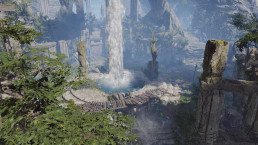

Battles take place in turns and are almost identical to those in the paper Dungeons & Dragons. You roll a dice at the start to see who can attack first, after which everyone can take turns doing something. On a turn, each character may move, perform a main action and a bonus action.
At its core this is quite simple, for example you walk up to an enemy, use the main action to ram your sword into him and have another healing spell that you can use as a bonus action. But due to multi-level spells, reactions, and other underlying systems, there’s a lot of nuance to consider. No problem for D&D veterans, but players who are just getting on now encounter a steep learning curve.
That learning curve is even steeper if you play with a controller. Then the interface consists of radial menus on top of radial menus, innocently popping every new skill and spell without prioritizing anything. You can try to sort everything, but that’s a lot of hassle. And because you don’t know the tricks of the trade in the beginning, it’s difficult to see at a glance which buttons are the most important to look at first. You come across big circles full of buttons you don’t know, which you have to read one by one to understand them. And then a few more times, because only when you understand the game rules will everything in those menus become clear.
Many functions are hidden in unexpected places. Four-point-press keys are shortcuts to extra functions, but do something else if you explain them for a long time, something that the game unfortunately does not explain clearly to you. If you want to understand the gamepad controls, it is best to do some homework on the local search engine, but that is obviously not the best solution.
Another point of criticism: at the time of writing you will find quite a few bugs in Baldur’s Gate 3. We haven’t encountered any game-breaking issues yet, but occasionally a conversation with an NPC would repeat itself or the camera would freeze. It certainly has to do with the early appearance, because developer Larian Studios released the PC version a month earlier to beat competitor Starfield.
And honestly: in a game of this scale and with so many variables that influence your play session, it’s special that we haven’t run into more problems. Anyway, Larian has already released several patches and we have no reason to suspect that they will stop doing so soon.
Baldur’s Gate 3 has now also ruined many old RPGs for us, simply because we expect more real consequences for choices made after this game. It is a game that raises the standard, which is almost unfair to other developers, it takes a small miracle to produce a game like this in peace.
That makes it one of the best RPGs of recent years, but at the same time it is one that we cannot recommend to just anyone. Because again: if you haven’t played Dungeons & Dragons before, you’ll need some hours to properly understand all systems in Baldur’s Gate 3. It can be difficult to get into the game, as you can say about a soul like. But at the same time that’s the charm: Baldur’s Gate 3 Makes no apologies or compromises. It’s made for a group of gamers who have yearned for an AAA production-quality RPG, but with unparalleled depth that in some areas only the most hardcore D&D enthusiasts can appreciate. A game not for everyone, but the best in its class.
Score:
9,5
+ Very faithful to Dungeons & Dragons
+ Strategic combat system
+ Lots of freedom of choice with real consequences
+ A detailed and vibrant game world
– Controller interface is very unclear
– Larger learning curve for non-D&Ders
Review | Diablo IV
The first time I heard the sound, I knew I was in trouble. You know it, that swishing sound in Diablo when you open a chest and the loot flies through the air. A sound full of possibilities, endless possibilities. What could i get next, how could I improve, how could I become better?
I hadn’t touched Diablo in a few years, but when I heard that sound in Diablo 4, I knew it: the game immediately got me all over again. Diablo can motivate you like no other to keep playing in order to assemble ever better equipment, unlock ever better skills and tackle and hopefully defeat increasingly difficult bosses. This fourth part further hones that into an irresistible gameplay loop.
It’s a delicious feast of an endless stream of enemies and interesting skills to unleash on them. Diablo may sometimes feel like mindless clicking, but especially on higher difficulties you really need tactics. Especially if you play with several people at the same time, you can conjure up the entire screen with whirlwinds, fireballs, skeletons or landslides.
You start your journey by choosing one of the five available classes. Whether you go for the Barbarian, Druid, Rogue, Necromancer or Sorcerer, the skill tree allows you to completely adapt your character to your own playing style. The choice between these skills is better than ever because it offers a lot of flexibility without giving you too much freedom.
I myself chose the Necromancer, which immediately appeals to me. With a simple click you conjure up an army of skeletons at your feet that do what you want, attack whoever you want. From a distance I hurl bonespikes at the enemy and let my undead hordes finish the job. At later levels you can summon even bigger undead creatures including a golem.
Casting through the hordes of monsters with my karate was an immense pleasure. What makes it even more fun is that for each of the above skills I also had three or four other choices. For example, maybe you don’t want hordes of undead minions around you, but rather solve it alone. Or maybe you prefer to work with blood magic, kill your enemies and heal yourself in one blow. Each class is very well put together in that way, with at least four or five workable builds to go for.
Each choice also feels much more important. In Diablo 3 you could switch skills at any time, but in part 4 that comes with a price tag. In the beginning you don’t have to pay that much gold to ‘respec’ a skill and make a different choice, but later on it will cost a considerable amount of money. So you don’t have to be afraid of a wrong choice during the first levels, but you do have to make a clear decision in the end.
That may seem restrictive compared to the previous part, but it makes you feel much more connected to your character and his or her skills. You can also no longer turn off all your AoE skills just before a final boss, so you really have to make a balanced build. It’s a perfect balance between the freedom to make a wrong choice and the coercive hand to come up with a good tactic yourself.
The large amount of loot has also been improved in a way that was not obvious. Diablo 3 was packed with sets of awesome weapons and armor that you could combine for extra power. This seemed really cool, but also had a major drawback: some sets were clearly the very best, so most players only wanted those sets. That doesn’t offer much flexibility.
Diablo 4 doesn’t choose to make equipment even cooler and stronger, but instead scales back and makes it more flexible. You can improve almost anything you find at a blacksmith shop, change the properties of each piece of equipment, or even turn rare items into legendary pieces of equipment with special abilities of your choice. So the choice is no longer just: is this new weapon better or worse than what I’m using now? But also: can I make this new weapon even better, so that it is still useful? Only at the higher difficulty levels do you now encounter unique objects that offer some extra power, and even those often have limitations, so that the ‘ultimate’ build cannot be simply sketched out.



A change that immediately catches the eye is the dark style of this latest part. Some fans were shocked by the colorful environments in Diablo 3, although I was not one of them. I was charmed by the style, something different from the always so dark worlds of Diablo.
The game is beautiful and the new style often comes into its own. Environments are full of details, which can often be broken. The lighting in particular comes into its own, with lanterns swaying in the wind and bathing the dark streets in a wavering light.
However, the gothic style covers the entire game with a heavy blanket of dullness, which also makes everything feel a bit the same. In any case, the environments are not very creative and it mainly seems to be a list of hangouts for goths: a dark lawn, dark cave, dark desert, dark snow field, a castle that is on fire, but is still dark. I was never stimulated by anything new. They are mainly places that we have also seen in previous Diablos.
The story isn’t very impressive either. A bunch of fools summon Lilith, the daughter of Mephisto, who has a sinister plan to become more powerful than ever. You mainly follow her for the rest of the game, so that you never really meet her and are always too late to intervene. You especially get into trouble with the aftermath of her plans and the monsters she has summoned.
Normally I’d say if you’re playing Diablo for the story, you’re doing it wrong. But part four puts extra emphasis on it, with many more cutscenes and dialogues. That’s quite nicely done, with some emotional moments, but the game’s engine can’t really handle it. The camera is made to hover over the action, not to zoom in on someone’s face.
As a result, some videos are quite ugly. In any case, they are in stark contrast to the game’s CGI intro, which is so beautiful that it could have been shown in the cinema. There are a lot of cutscenes that have clearly been given more attention, but in normal conversation characters are sometimes wooden and environments suddenly much uglier up close.
The other big change: Diablo 4 is an online game. That works out differently, and depends a bit on your gaming taste. In any case, we do not yet know how well the servers will hold up, but that will in any case be fine in the longer term. A bigger downside is that the game cannot be paused. That’s quite annoying if you’re just busy in a dungeon and the doorbell rings, or your cat pukes on the carpet. Since you can be attacked at any time, only in villages do you feel safe enough to go to the toilet.
On the positive side, the open world feels much more social as a result. Everywhere you see other players walking around in villages, or you meet them at one of the random events on the map. It feels good to go into battle together, overcome a tough challenge and then choose your own path again. Although of course you can always become friends or join each other’s clan.
Diablo 4 is already a pleasure on your own, but especially with multiple players in a group of up to four, the game really comes into its own. The interplay between the different classes and the effects of all those different skills racing across the screen: it’s a pleasure to watch and to control.



Diablo 4 is a gigantic game, with more elements than we can describe in one review. The best part is how the game seems to find a solution for all the little problems that could ruin your gaming experience.
In addition to the aforementioned smart things about loot and respecting builds, for example, it does its best to make the open world manageable. Everywhere you will find dungeons, side missions and cellars full of monsters, but of course you don’t have to go through everything. However, optional dungeons grant Legendary abilities that you can craft on your equipment. Fortunately, you can see on the map which skill you find in which dungeon, so that you don’t waste hours in dungeons only to get skills that you can’t use with your class.
At the same time, the game knows how to motivate you to spend more time in the open game world. Each area discovered, mission or dungeon completed fills a reward meter, unlocking crucial items for that region of the world map. Consider, for example, extra skill points or more XP, but also an extra health bottle that you always carry with you. This way you are constantly encouraged to stray from the path and visit the optional villages, characters and dungeons.
The game is full of these kinds of elements. Just when you get the feeling that the open world is getting very big and difficult to navigate, you get a horse at your disposal to race through it a bit faster. You can put a pin on your map and the fastest route to get there will automatically be shown on your minimap. Anyway, you can teleport to any village you’ve been to at any time, sell your inventory and then go back to where you left off. These are all elements that reduce the friction of this sometimes overwhelming game and make it endlessly playable.
Of course a game like Diablo 4 is difficult to review. I have now put in a decent amount of hours and have only just got a taste of the game, in which you always complete new dungeons and other challenges at higher levels of difficulty. I have seen a solid basis there to want to continue playing the game for dozens of hours, but my playing time is certainly too little to know whether this will remain fun and challenging for hundreds of hours, let alone whether all classes will reach level 100 in their ultimate form be well balanced. Also, the first season doesn’t start until July, so I can’t tell you if the upcoming Battle Pass with cosmetic items will ruin the gameplay.
What I do know is that Diablo 4 lays an unprecedentedly good foundation that fans can use again in the coming years. The game seems even better balanced, loot has been cleverly adjusted and your heroes and gear feel more personal as you have to think more about your build.
Score:
9,0
+ Weighty choices in character development
+ Open game world that rewards curiosity
+ Loot system feels well balanced
– Story and environments are a bit disappointing
– Game cannot be paused
Review | Horizon Forbidden West: Burning Shores
A good expansion usually consists of the best of the main game, with a small twist. The expansion to Horizon Forbidden West is also made according to that proven recipe. Built on the shoulders of a giant, but with new locations, missions, enemies and weapons, Burning Shores on paper has everything to keep you entertained for another ten hours.
Burning Shores takes place right after the end of Forbidden West. You must therefore also have completed the main story before you can start the expansion. Once you’re ready, you can expect a call from Sylens, one of the last roles of the recently deceased Lance Reddick. On his advice, Aloy travels to the “burning coast” of California.
The area around what is now called Los Angeles has been changed almost beyond recognition in the world of Horizon by centuries of landslides and volcanic activity. Amid ruins and lava flows, a new evil is brewing. It is of course again up to Aloy to eradicate that with root and branch.
Once there, however, something else is brewing. Aloy soon encounters Seyka, a stranded Quen. They have a common goal of finding Seyka’s missing tribesmen, but it doesn’t take long for more to come between the two. It’s nice to see another side of the so stoic, heroic Aloy, but the question is whether this expansion is the best place for that.

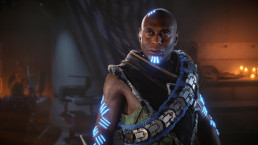
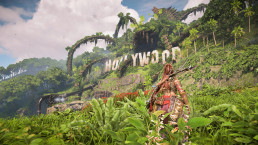
Aloy and Seyka need quite a bit of time to thaw out, but there isn’t that much time in this expansion. Almost all missions are therefore part of one continuous story to give the two ladies as much screen time as possible, but even then their story arc feels rushed. A specific visit to a derelict theme park also feels like a page straight out of The Last of Us: Part 2 script. But then with dialogues that are sometimes cut off or disrupted because Seyka accidentally stays behind somewhere.
Horizon is good at completely different things, such as fighting with gigantic robots. But that too is pushed to the background a bit in Burning Shores. There are hardly any new enemies and therefore hardly any challenging confrontations. It is as if the game saves its gunpowder for the final battle, which is so bombastic that at times you can only dodge and hope for a good outcome.
This last fight is also the only moment that somewhat explains why Burning Shores only appears on PlayStation 5, and not on PS4 like the main game. Anyone who expects a kind of next-gen Horizon due to that exclusivity will be disappointed.
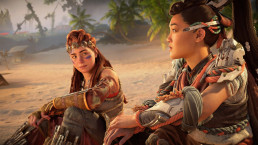


Other activities can literally be counted on one hand. It is not a problem that the abundance of generic icons on the map has been cut. For example, we can miss Metal Flowers and Firegleam as a toothache. But nothing replaces it either. There is therefore almost no reason to explore the landscape.
In fact, self-exploration is actively countered by making certain regions inaccessible until you visit them for a story mission. Burning Shores has therefore become almost a linear adventure. It is a huge contrast to Forbidden West, where main and side missions were wonderfully balanced and you enjoyed a lot of freedom.
In this way you go through the available missions in a nutshell and after about twelve hours you have already scraped the bottom out of the can. Burning Shores isn’t bad, as it’s built on the rock solid foundation of Forbidden West, benefiting from a fluid combat system and eye-catching graphics, especially when a mountainside is ominously illuminated by a swirling lava flow. But where The Frozen Wilds was still a kind of pressure cooker version of Horizon Zero Dawn, with all ingredients in an extra high concentration, Burning Shores feels out of balance.
Both Aloy’s personal development and her discoveries are an important prelude to Horizon 3, and it is also nice to see Lance Reddick as Sylens one more time. For fans, that is reason enough to travel to the south. But with a setting as interesting as the volcanic ruins of Los Angeles, you’d expect some more proverbial landslides.
Horizon Forbidden West: Burning Shores is out now on PlayStation 5.
Score:
8,0
+ Spectacular final battle
+ We get to see another side of Aloy
+ Visually stunningly beautiful
– To few activities besides the main story
– Feels Rushed
Review | We Were Here Together
We Were Here Together is the third iteration of this puzzle game from the dutch studio Total Mayhem Games that puts you in a world filled with puzzles where you have to work together with a friend to solve said puzzles. The game is aimed for 2 person co-op so you will need a friend to play this game.
Visually this game is very pleasing to the eye and certainly a step up in quality from the previous 2 games in the series. I have yet to see anything that looked off or strange graphics wise while playing through the game although sometimes the glare of light reflecting off of a screw or other metalic object made me think that I found something interactable but it was just a set piece of the environment.
Gameplay wise this game is also quite a step up from the previous games. The first game took me and my friend 2.5 hours to 100%, the second game took us 4 hours and this one took us over 9 hours to 100% although we could have done this one faster but we got a bit stuck on one of the later puzzles. There are more puzzles, more intricate puzzles and some of them are also quite a step up in difficulty compared to the previous games. What I really like about this one compared to the other games in the series is the fact that you first start off puzzling together and it is only around halfway through the game where you get seperated and have to start using your walkie talkies or another voice chat program to get through the puzzles (we used Discord because sometimes the in-game voice chat would get stuck in broadcast mode and we could hear everything happening in eachothers background environment). Each of the 2 players have parts of the solution to the puzzles and have to relay information to eachother to solve the puzzles together. For example, one of the players has formula’s to a certain element you need to create in-game but the formula’s have abbreviations which the other player has so you have to help eachother and combine the information you have to finish the formula’s and create the item you need to finish the puzzle.



Although they have implemented more of a story to this game I have to admit that obviously it is better than the previous games but it is still quite lackluster. But I did enjoy the story soo far. They just could have done more with it in my opinion.
The audio is once again very good and I particularly enjoyed a scene where someone was playing on an organ in a church, very crisp audio apart from the small bug we had with the in-game voice chat but the quality of the audio was great.
Although the puzzles are a big step up both in duration as well as difficulty I do have to admit there were a few puzzles where it was quite unclear as to what we were supposed to do to progress. This is probably why you could probably finish this game faster than our 9 hours if you catch onto what you need to do faster than we did.
If you want to 100% this game and get all the achievements as we did on Steam then you have to play through the game at least twice. As I mentioned before you play the first handful of chapters together and you will both receive the same achievements but from the point on where you get seperated you will have to replay the game from the other player’s perspective and do the other parts of the puzzles. But fret not, there is a chapter checkpoint system where you can easily make a new game room and choose the chapter you wish to play and switch roles so you get the other part of the puzzles.
All in all a very visually and audibly pleasing game which is a lot of fun to play with a friend and also quite nice and satisfying to 100% for achievement purposes. The puzzles were great and very enjoyable and that AHA moment when you finally find out what it exactly is that you need to do is satisfying. Try and get the game during a sale because the 13 euro price tag is just slightly steep compared to the amount of game time you get out of it. I am very much looking forward to the fourth game in the series which is called We Were Here Forever. I will eventually be playing this one too and will certainly be writing a review for that game as well in the future.
Score:
8,0
+ Visually pleasing
+ More challenging puzzles
+ Great audio and music
+ Great Co-op game
+ Chapter saving system
– Slightly short and bland story
– Puzzles can be unclear at certain times
Review | Hogwarts Legacy
The developer of Hogwarts Legacy has kept us warm in recent years with extensive trailers about Hogwarts, tutorials for caring for mythical creatures and wintery atmosphere films with fireplaces. We therefore did not expect that the game would excel in its action-packed gameplay and adventurous plot full of riddles and mystery.
In the first half hour of Hogwarts Legacy, you’ll be attacked by a dragon, take a dizzying rollercoaster ride through the banks of Gringotts and find yourself in a haunted vault, where you’ll be unexpectedly attacked by living statues after solving a cryptic mirror puzzle. This fusion of exciting action with dark mystery immediately draws strong parallels with the Harry Potter films. A feeling that is further exaggerated when the prologue ends and the camera slowly zooms in on a stone Warner Bros logo, while familiar orchestral music rings in your ears.
Hogwarts Legacy is at its strongest when you let the story guide you and you get the feeling of playing the leading role in a magical fantasy story. But the game is much more than ‘just a story’. It is a large-scale wizarding simulation as well as an open world game. When you pull up floating platforms in underground dungeons with Accio spells, it even looks a bit like a platformer. Hogwarts Legacy is a game of many elements: from simulating a magical school life, to crushing a goblin rebellion with brute force, and from capturing and taming mythical beasts, to completing all kinds of side missions spread across a large world. With such a broad scope, Avalanche’s Wizarding World adventure has something for everyone, exactly what fans have been hoping for since its announcement.
Hogwarts Legacy revolves around you: a teenage witch or wizard who is invited by Professor Eleazar Fig to join the fifth year of Hogwarts School of Witchcraft and Wizardry. Soon, Fig discovers there’s much more to you than a quick flash of light or a simple hover spell. You can see traces of an ancient form of magic that hides other wizards from the naked eye. As a group of rebellious goblins led by the enemy Ranrok seek to obtain this magic to seize power in the Wizarding World, you unknowingly become a key pawn in a dangerous game. Reason enough for the Hogwarts professors to introduce you to a special trajectory, which will soon make you stand out just a bit more than your fellow students.
In addition to taking lessons at school, you venture outside the castle walls several times to trace traces of that ancient magic and find out what the goblins are up to with it. You often do this together with your mentor Fig, but as a stubborn teenager you also venture out into the wide world on your own several times. You regularly involve a fellow student, such as the stubborn Slytherin apprentice Sebastian, who is only too happy to teach you a dark spell or two.
Every so often you will come across an abandoned tower or castle that contains a trial; a kind of sorcerer’s test that teaches you more about the ancient form of magic. These underground trials are expressed in The Legend of Zelda-esque dungeons full of magical booby traps – such as bridges that suddenly start flapping like a carpet – and various types of puzzles that you as a skilled wizard must solve on your own.
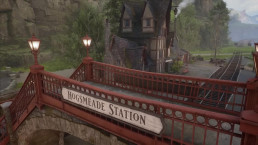


The recurring dungeon crawling element is perhaps the most surprising aspect of Hogwarts Legacy gameplay. The puzzles and twists you encounter during the trials (but also often enough outside of them) may not be of the same level as that exemplary Nintendo franchise, but are nevertheless creative and often quite challenging. Instead of a bow and arrow or a bomb, you mainly use your wand here, which you have to use in the most imaginative ways. For example, you use a spell like Accio to lift yourself over an abyss on a plateau. People with a little knowledge of the spells in Harry Potter are guaranteed to have an edge with the puzzles.
The way you use spells in Hogwarts Legacy is actually a lot more interesting than we initially expected. This is also evident from the fights, which, in contrast to the books and films, are much rougher. This way you can use almost all the spells you have in your arsenal during battle. This often produces spectacular scenes and interesting combinations. Especially the dozens of combos you can make keep the combat system in Hogwarts Legacy constantly entertaining.
Fighting in Hogwarts Legacy is unprecedentedly brutal and to be honest it rubs a bit with the otherwise family-friendly Harry Potter series. Those who feel a bit at home in action games can at least indulge their lust. You can almost call Hogwarts Legacy a button masher; combat is chaotic at times, it’s all about reaction speed, and with a little training you can get really good at it.
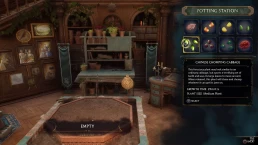

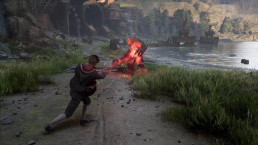
Most spells are learned by taking classes at Hogwarts. The better you do at school, the more spells you unlock and the faster you develop yourself. At the same time, the school offers much more than just learning spells. For example, during a course like Herbology you come into contact with the wonderful world of magical herbs and grow carnivorous plants, and during Potions you make all kinds of magical concoctions. The Care of Magical Creatures course introduces you to magical creatures and teaches you how to approach them in the wild.
Besides witty cutscnees and some subtle minigames, these lessons are unfortunately not much more than that. You mainly unlock spells and learn, for example, which potions you can make to help you during your extracurricular activities. In the greenhouses of Hogwarts, you can use tips from Professor Garlick to grow monster plants such as the screaming Mandragoras, which you can then use as a kind of Pokémon during battles. So most of your time at Hogwarts is spent on homework rather than on the lessons themselves. And wandering around the castle of course!
Hogwarts is grandiose: you will certainly lose a few hours if you want to get to know the castle properly. That is not crazy; in the books the castle was already big, and this is the first time it has been realized in its entirety. For example, locations such as the History of Magic classroom and the teachers’ lounge have only existed on paper until now, but now they can be seen and experienced for the first time. Those who know the books a bit will notice that Avalanche Software has thoroughly studied the source material. The map of Hogwarts is accurate and there are all kinds of little details scattered in and around the castle that will make the biggest fans overjoyed.
Hogwarts is a visual spectacle; the same goes for the neighboring shopping village of Hogsmeade and the beautiful natural landscapes. It is a pity that all those wonderful details often take a while to come into view. Hogwarts Legacy is constantly plagued by loading textures, resulting in pop-ins. This is especially disturbing when you dash through the open world on a broomstick or Hippogriff, when trees suddenly get leaves or the facades of the castle suddenly change. But also during cutscenes, a lot happens in the background, which sometimes makes it seem as if the ground is shaking.
Hogwarts Legacy is a beautiful game, but sometimes leaves something to be desired on a technical level. We were spared really annoying glitches, except for a sheep that suddenly came waddling through a door. It is mainly technical imperfections that you cannot hide from the eye, as well as the NPCs that, in contrast to the beautiful backgrounds, look very rickety.
Fortunately, these imperfections do not ruin the gigantic experience of Hogwarts Legacy for many players. Avalanche Software has created as faithful a Wizarding World experience as possible through its design, world building, and careful study of Rowling’s source material. Hogwarts Legacy is sure to put a big smile on the face of Harry Potter fans.
Hogwarts Legacy releases this Friday on PlayStation 5, Xbox Series X and S, and PC. The game is coming to PlayStation 4 and Xbox One on April 4 and to Nintendo Switch on July 25. For this review, the PlayStation 5 version was played.
Score:
9,0
+ Beautiful open World
+ Combat System
+ Dungeon Gameplay
+ Story
+ Breathtaking and detailed Hogwarts Castle
– Classes are nothing exciting
– Some puzzles/caves a bit repetitive
Review | God of War Ragnarök
“Why did you want to do this mission with me, father?” Atreus asks after one of the many optional tasks. Kratos growls a bit, but doesn't dare to show the back of his tongue. It's Mimir, the severed head full of funny stories, who finally breaks the silence: "He just wants to spend some more time with you." It is also a perfect metaphor for God of War Ragnarök.
Because yes, the successor to the 2018 reboot essentially feels like more of the same. But that God of War was so good that spending more time in this world is absolutely no punishment. If you really don’t want to know anything about the game, read this one sentence before closing this page: anyone who enjoyed the previous game will be completely satisfied with Ragnarök.
But Mimir’s quote also applies in another way, namely because of the emotional underlay. Ragnarök focuses almost all his arrows on the story and the development of the relationships between characters. Scenes seem to have been written on purpose to make you cry, and dammit, they work damn well too.
God of War Ragnarök starts in the same place as the first part, namely at home. Kratos and Atreus have been hiding for a few years because everyone is out to get them. Freya is angry that they killed her son Baldur, Thor is angry that his sons did not survive and supreme god Odin is angry because… well, because Ragnarök is coming, the prophesied end of the world.
Atreus is tired of waiting and eager to discover who he is and what part he plays in all the prophecies. Shouldn’t he be saving the world, or at least helping with something? What follows is an immersive adventure in which everyone learns something about themselves. Can you break free from prophecies and expectations to become who you want to be? Are you in charge of your own destiny?
In this grand pantheon of quarrels between gods, everything feels very personal. Kratos is no longer as he used to be on a murderous crusade to kill all the gods, but is willing to talk things through and avoid violence, if this keeps his son safe. The growth that Kratos is experiencing as a human being is enormous, sometimes even unbelievably large. Not that he is now whining endless monologues, but the Kratos who only wants to drink blood is definitely a thing of the past.

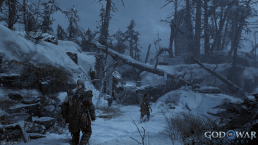
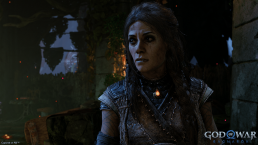
The focus is on personal interests and motivations, which impressively seeps through even in the side missions. The game again has a number of open hub worlds, in which you can explore somewhat freely. Ragnarök isn’t an open world game all of a sudden, but just like in 2018’s God of War, there are optional areas where you can find additional content if you feel like it.
You’ll be triggered more than ever to sink your teeth into it, as you’ll be rewarded with bits of story and emotional moments surrounding the main characters. For example, in the dwarf kingdom of Svartalfheim, Mimir asks you to dismantle construction sites, because in the past he helped Odin turn the dwarfs into slaves of sorts. He wants to correct his mistakes from the past, which adds an extra layer to this fairly simple job.
In any case, the many characters are the biggest plus of the game. Returning favorites such as Mimir and the dwarfs Brok and Sindri, as well as new friends from the gods realm impress. The acting is top notch, with Danielle Bisutti as the highlight. Her broken Freya swings between limitless anger and heartbreaking grief, and is a joy to watch.
In addition, the portrayal of Odin is a bold choice that turns out fantastic. Between large and taciturn muscle masses like Kratos and Thor, Richard Schiff plays the supreme god as some sort of mob boss who relies more on his brain than on sheer strength. It makes him an endlessly intriguing antagonist who is always two steps ahead of you.
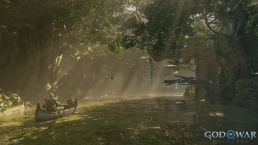
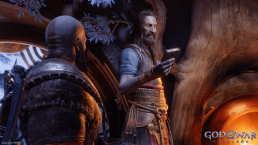
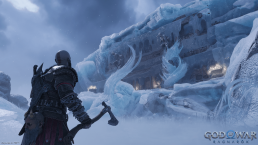
This story is again brilliantly portrayed by fabulous camera work, where no cuts are ever made in scenes. Everything is one take, which makes the adventures of Kratos and Atreus even more personal. You really feel like you are staying by their side and going out together. It also provides the necessary calmness, because the camera rests on faces for a long time. When there is an Important Conversation, you get all the nuances on the faces of the actors.
This time, the camera gets a little more space to capture other storylines as well. Ragnarök has a lot of creative tricks in store to portray the whole in a surprising way and to let everything melt together perfectly. Director Eric Williams deserves a big compliment for his sometimes daring, but certainly successful choices in the script.
You might notice that this action-adventure review isn’t about action for 12 paragraphs. This game relies so much on the story that the developers themselves sometimes almost forget that there is still a fight to be made. Quick, throw another group of meaningless enemies at the player! You are regularly confronted with small fights, just because the previous fight was so long ago.
That sometimes breaks the pace of the game, especially if it starts to feel like a must. Some battles and environments are even exactly the same as in the previous game. “Hey, remember this great enemy? Well, there it is again!” Fortunately, the total amount of different enemies has increased, making the game more varied in the end.
It shouldn’t spoil the fun too much, especially because the combat is so very good and tight. Little has actually changed since the previous game, but that’s not a bad thing at all in this case. The ax and double chain swords feel great as ever. You have total control over Kratos and all his moves, the controls never get in your way and the combos flow effortlessly from your fingertips.
New additions to your arsenal are welcome, but not a major revolution. For example, you can now charge your weapon before starting a combo for an extra dose of ice or fire. Later in the game you can choose to focus more on long-range combat, but hey, who wants that when you’ve got your hands on those iconic melee weapons?
You also have little time to get bored of the combat, because the game contains more epic moments and battles than before. Although Ragnarök, like his predecessor, has a slow start, the journey is more than ever filled with memorable confrontations.
Despite the above criticisms, God of War Ragnarök is a beautiful game that feels epic and grand in everything. The game is finished to perfection, all animations and details are correct and bugs are hardly or not present at all. The worlds are breathtaking at times, full of small details that bring the game all the way to life. We might have liked to see a bit more of some environments, because not all areas can be explored at your leisure.
But you really can’t complain about a lack of content here. The story rages across your screen in about twenty hours, but if you also want to explore all optional missions, you will certainly lose twice that, and maybe even more.
According to the developers, this God of War series will not be a trilogy and Ragnarök is the closing of this story. Strangely enough, it does feel like a trilogy. The game is so packed with surprising story moments that it feels like you’ve played two entire games in one. As if the studio had planned the story of a trilogy, but crammed the last two parts into one fantastic package.
Lesser gods would collapse under their own weight in such a case, but with Ragnarök that is absolutely not the case. The game is overcrowded, in the most positive way. It brilliantly weaves together all of its storylines and grandiose action, never having you huffing and puffing at the clock. After thirty hours of playing, we just want to spend more time in this world. Fortunately, there is still plenty to do.
God of War Ragnarök is available for PlayStation 5 and PlayStation 4. For this review, the game was tested on a PlayStation 5.
Score:
9,5
+ Combat remains excellent.
+ Beautifully beautiful and compelling.
+ Phenomenal and emotional acting.
+ Great story, creatively portrayed
– Puzzles slow things down.
– A bit too linear at times.
